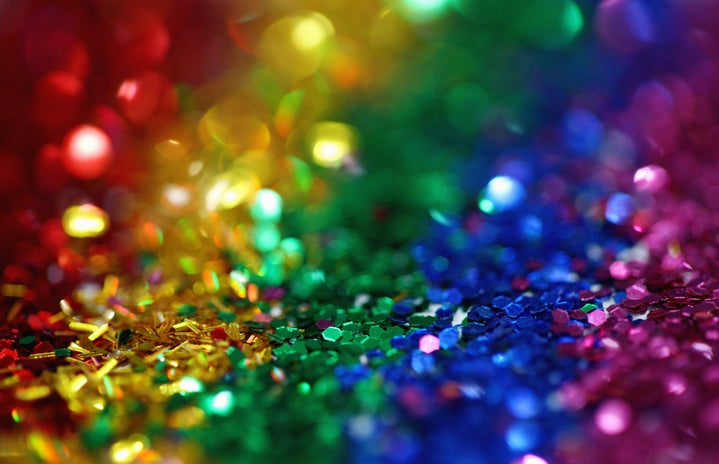The history of Drag culture is long and rich. In the Western world, Drag harks back to Shakespearean times, when only men were allowed to act, forcing the women’s roles to be played by men in women’s clothes. Drag has always been attached to entertainment.
In the West, Drag then transitioned from acting in plays to extravagant Vaudeville performances. Vaudeville is a style of performance that mixes singing and dancing with burlesque. It was mainly popular between the 1880s to about 1930, when the Great Depression hit and people turned to cheaper forms of entertainment. Many people were successful in Vaudeville, but one of the most famous performers of the time was Julian Eltinge, who is also thought of as the first drag queen (in the modern sense of the word). During this time, female impersonation was not yet tied with the LGBTQ+ community, and people had a tolerant attitude towards “cross-dressing” (wearing clothes typically worn by the opposite sex), but not towards homosexuality. Coming out could destroy your career, and while there was a lot of speculation that Eltinge was gay, he never confirmed it.
In 1920, Drag Balls became more popular (though they date back to 1869, when the first ball was held by Harlem’s Hamilton Lodge). Drag Balls were underground celebrations where members of the LGBTQ+ community went to celebrate their culture with other people of their community. It was created amidst the Harlem Renaissance, which means we once again have Black drag queens to thank for creating a culture of acceptance among the community. Remember that it was because of the racism that Black drag queens experienced in predominantly white gay spaces that they created Drag Balls. It was also around this time that Prohibition arose, creating a whole other underground scene of illegal activity. The owners of these clubs allowed drag queens and other members of the LGBTQ+ community to gather. Speakeasies became an important part in keeping queer culture alive.
At the onset of the Great Depression, law officials began cracking down and criminalizing same-sex activities, including “cross-dressing.”. In the 1960s, a rule/code called the “three-article rule” was introduced. This was an informal rule used by the police that stated that a person must be wearing three articles of clothing that correspond to their assigned sex at all times. This was not an official law, and can’t be found in any old law books or police records. In order to make arrests, police used old laws from the 1800s referred to as “masquerade laws,” which were created in order to police costume-wearing on the streets. Drag Balls continued during this time and became more necessary as a safe space for LGBTQ+ people as police were increasing arrests and hate crimes on the streets were increasing.
This is when the mob entered the gay scene in New York. It was basically thanks to the mob and the Genovese family that gay bars and gay culture were able to continue in New York in the 60s. All types of laws and rules had been introduced to criminalize the LGBTQ+ community, and the Genovese Family—who ran the Manhattan bar scene—believed they could profit off of it. By “greasing the palms” of the NYPD, their bars were allowed to continue to operate, and continued to attract the gay community, as these bars were the only place they could be free to be themselves. These bars also made sure raids came at a time when few patrons were in the establishment and they warned the patrons about them beforehand. Of course, the LGBTQ+ community severed ties with organized crime, but they always remembered that major crime bosses had provided them with a place and protection from persecution.
In 1990, a documentary called Paris is Burning was released. It offered insight into drag ball culture and the people who helped cultivate such a rich and complex way of life. It goes into the evolution of drag, explaining the way underground clubs worked and the meaning of drag families, as well as words and phrases used within the drag community. Paris is Burning features Willi Ninja, who is credited as inventing the dance known as voguing. Frustrated by the racism he experienced within the drag and LGBTQ+ communities, Willi Ninja and other drag queens, such as Pepper LaBeija, formed drag “houses”—groups of young gay and transgender people who looked to older members of the community for guidance. The people who joined these houses had often been kicked out of their homes for being gay or transgender, or had lost their homes as a result of gentrification or HIV/AIDS, which upturned the lives of many during the 80s and 90s. The Houses competed against each other for prizes and fame in order to create space for Black drag queens in the community. The House of Ninja was known for its dancers and Willi Ninja used the drag ball scene to hone his craft and to influence a new generation of drag queens. He taught voguing to people all over and even helped to train models. Willi performed androgyny instead of the typical femininity represented in drag and was very vocal about the AIDS crisis. Unfortunately, Willi contracted AIDS and died in 2006 from AIDS-related heart failure.
Many people know drag today because of RuPaul. RuPaul is perhaps the most famous drag queen in the world, with versions of RuPaul’s Drag Race in America, Thailand, the UK, Chile, the Netherlands, Spain, and in the past year, newly-released versions in Canada, Australia, and New Zealand. He has brought drag into the mainstream by appearing in talk shows, movies, and TV shows, as well as hosting his own TV show and his own talk shows in the early 2000s. Other famous drag queens like Divine (who starred in many John Waters films), Bert Savoy (who is believed to have influenced actress Mae West), Lady Bunny (who founded Wigstock, a festival to celebrate drag queens), and Marsha P. Johnson and Sylvia Rivera (who of course played an integral part in the Stonewall Riots) all played their part in helping drag become mainstream.
While the Drag culture many of you are familiar with was created and influenced by Black drag queens and members of the LGBTQ+ community in the USA and UK, the concepts of drag, gender expression, and performance art have been around since the dawn of time in many non-Western cultures.
Female impersonation has been around for forever. For example, the Japanese art of Kabuki theatre had male actors dressing as women to play women’s roles. While this is not drag per se, it illustrates that female impersonation was not only present in Western culture. This is also shown in Ancient Greek performance art.
Additionally, there is documentation to show that dressing in the opposite sex’s clothing was also used for religious ceremonies in Inca, Aztec, and ancient Egyptian ceremonies. These ancient civilizations, as well as Indigenous cultures, had a much looser interpretation of gender than Western cultures, and “cross-dressing” was common and not stigmatized in them.
Drag is a culture of freedom and expression; it has no rules. Drag is a form of art with a deep history that shouldn’t be pushed to the side.
Sources:
https://www.bbc.co.uk/bitesize/articles/zbkmkmn
https://outhistory.org/exhibits/show/tgi-bios/willi-ninja
https://allthatsinteresting.com/history-of-drag-queens
https://allthatsinteresting.com/famous-drag-queens
https://www.bbc.co.uk/bitesize/articles/zbkmkmn
https://vaudeville.sites.arizona.edu/node/83
https://cfda.com/news/striking-a-pose-a-history-of-house-balls
https://www.history.com/news/how-the-mob-helped-establish-nycs-gay-bar-scene
https://www.popsugar.com/news/History-Drag-Drag-Queen-Culture-44512387


